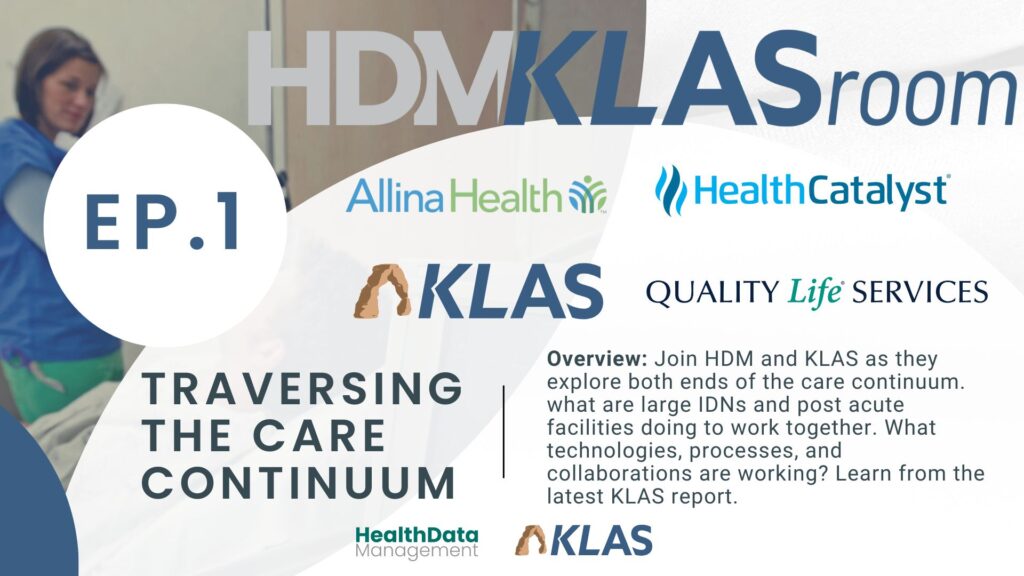HDM CLASSROOM: Traversing the Continuum of Care – EPISODE 1
Featuring Allina Health, HealthCatalyst, KLAS Research, and Quality Life Services.

SESSION 1: Having the foresight to pivot: A post-acute journey to transform before the pandemic storm
ON DEMAND RECORDING
Subject Matter Experts
Paul Hess, Senior Director of Research, KLAS Enterprises
Karolyn Davis, Director of Clinical Informatics, Quality Life Services
Holly Reedy, Director of Care Coordination, Quality Life Services
SESSION 2: An IDNs wholistic approach to improving outcomes through care transitions
ON DEMAND RECORDING
Subject Matter Expert
Supporting Content
The Queen’s Medical Center (QMC) was the site of nearly 60 percent of all emergency department (ED) visits by people who are homeless—and some visited the ED every day. A disparate number of resources went towards treating these patients, and they would have received better care for their needs outside the ED. To improve patient outcomes and reduce costs, The Queen’s Health Systems developed a program to improve outcomes for this unique patient population, leveraging its analytics platform, payer data, and patient flow data to evaluate the system’s success and efficiency.
Data-Informed Population Health Reduces PMPM
The success of accountable care organizations (ACOs) depends on performance, which can make profitability unpredictable. Deep insight into the right data that supports the delivery of effective care management is vital for ACOs to prosper. MemorialCare needed a way to better access the numerous inputs of data so it could increase its capacity to utilize data for continuous improvement. By leveraging its analytics platform to help support the delivery of care management and prioritize resources, MemorialCare has enhanced its performance, resulting in improved patient outcomes and cost savings.
How Managing Chronic Conditions Is Streamlined with Digital Technology
Chronic conditions across the United States are prevalent and continue to rise. Managing one or more chronic diseases can be very challenging for patients who may be overwhelmed or confused about their care plan and may not have access to the resources they need. At the same time, care teams are overburdened, making it difficult to provide the support these patients require to stay as healthy as possible. A new approach to chronic condition management leverages technology to enable organizations to scale high-quality care, identify gaps in care, provide personalized support, and monitor patients on an ongoing basis. Such streamlined management will result in better outcomes, reduced costs, and more satisfied patients.
Deliver Better Population Health by Avoiding Three Mistakes
Despite the widespread use of population health as a solution to control rising costs and poor outcomes, healthcare organizations struggle to effectively achieve population health success. A common barrier to success is lack of access to data about a system’s most impactable patients, their interventions, and how said interventions impact a patient’s health. However, health systems can overcome the following all-too-common population health mistakes by leveraging detailed data about their most impactable patients and interventions.